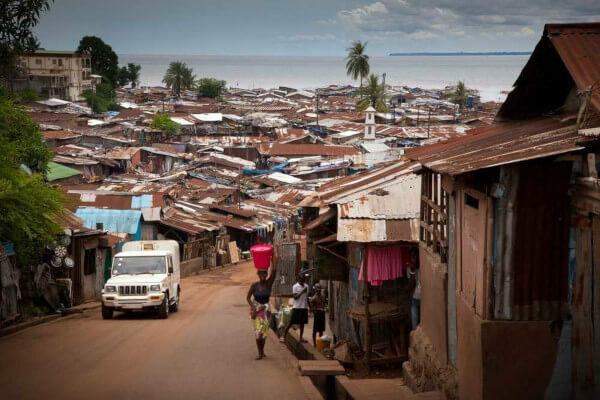Developed countries, also known as industrialized countries or first world countries,they are those with high socioeconomic development.
The classification criteria of these nations take into account the degree of wealth, of industrialization it's from development, the collection of goods and services through theGross Domestic Product (GDP), aper capita income and social indicators, especially the Human Development Index (HDI).
Characteristics of developed countries
→ Economy
Developed countries have high economic development and are highly industrialized. In relation to the sectors of the economy, they are represented by the tertiary (commercial activities) and quaternary (information services) sectors.
They have a high GDP, which is the monetary value of the goods and services produced by the country in a period of one year. Per capita income in these countries is generally high, and its distribution is more homogeneous than that of underdeveloped and developing countries.
→ Society
Developed countries have good social indicators. O
HDI, an indicator that assesses the levels of education, health and income in these countries is close to 1. This value indicates good quality and life expectancy, a high degree of education and literacy, and a high per capita income.In addition, developed countries have reduced birth rates, death rates and infant mortality.
Examples from developed countries
→According to economic criteria
United States - GDP: 19.39 trillion USD
Japan - GDP: 4.872 trillion USD
Canada - GDP: 1.653 trillion USD
Australia - GDP: 1.323 trillion USD
→ According to social criteria
Norway - HDI: 0.953
Switzerland - HDI: 0.944
Australia - HDI: 0.939
Ireland - HDI: 0.938
Read too:Most populous countries in the world
developed countries of america
On the American continent, there are two developed countries:
U.S: country with a high degree of industrialization, developed infrastructure and high productivity. It has a high Gross Domestic Product (19.39 trillion dollars), representing about 24% of the world GDP, and an HDI of 0.924.
Canada: country with one of the greatest wealth in the world. It represents the tenth largest economy in the world and is the largest trading partner of the United States. It has a GDP of 1.653 trillion dollars and an HDI of 0.926.
Developing countries
Developing countries are those that have significant economic and social growth, recent and growing industrialization, in addition to a significant increase in the monetary value of the goods produced (GDP).
The International Monetary Fund (IMF) considers Brazil, Argentina, Colombia, China and Mexico to be developing countries. These nations have shown significant economic development in the industrial and export sectors, as well as improvements in social aspects. Despite these advances, they still have several problems in the education and health sectors.
Read more: IBrazilian industrialization

Brazil has shown significant economic and social growth, being considered a developing country.
Underdeveloped countries
THE United Nations Organization (UN) classifies as underdeveloped countries with low social and economic development. The social indicators of these nations reveal problems such as poor quality of life, deficits in health and education, poverty, hunger, malnutrition and high unemployment rates.
Normally, mortality and birth rates in these countries are high, demonstrating social fragility. Furthermore, the HDI value is closer to 0 when compared to developed countries.
With regard to the economy, underdeveloped countries have a low GDP, in addition to low and poorly distributed per capita income. They have a low level of industrialization, depending on the developed economies.
The economy of these countries is considered vulnerable and is based on the primary sector, through agriculture and livestock, and on the service sector.
According to the UN, examples of developing countries are: Sierra Leone, Niger, Haiti and Afghanistan.

Sierra Leone is an underdeveloped country in West Africa.
Developed and underdeveloped countries
Developed countries |
Underdeveloped countries |
|
Features |
They have a high degree of industrialization, high per capita income and excellent social indicators. They have an HDI close to 1, indicating good quality and life expectancy, as well as educational opportunities. |
They have a low degree of industrialization and low per capita income. Social indicators point to problems. The HDI is close to 0, indicating low quality and life expectancy, economic vulnerability and reduced educational opportunities. |
Gross Domestic Product |
High |
Low |
Economic development |
They have economic domain, and the development of their economy is stable. They generate revenue through the industrial sector. |
They depend on developed countries to grow economically. The economy is predominantly agricultural, and revenues are generated through the agricultural and service sectors. |
Income distribution |
homogeneous |
heterogeneous |
Quality of life |
Good |
regular/bad |
Life expectancy |
high |
reduced |
HDI |
High |
Reduced |
education |
high literacy rate |
High illiteracy rate |
Demographic Indicators |
Low birth, mortality and infant mortality rates. |
High rates of birth, mortality and infant mortality. |
Examples |
Norway, United States, Switzerland |
Sierra Leone, Niger, Haiti |
Also know:What are the sectors of the economy?
HDI ranking
According to the UN, the ranking of the Human Development Index is divided into:
1. Very high
Norway: 0.953
Switzerland: 0.944
Australia: 0.939
Ireland: 0.938
Germany: 0.936
2. High
Iran: 0.798
Palau: 0.798
Mexico: 0.744
Venezuela: 0.761
Brazil: 0.759
3. Average
Philippines: 0.699
Egypt: 0.696
Bolivia: 0.693
India: 0.640
4. Low
Uganda: 0.516
Haiti: 0.498
Congo: 0.457
Niger: 0.354
Sierra Leone: 0.413


